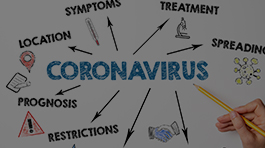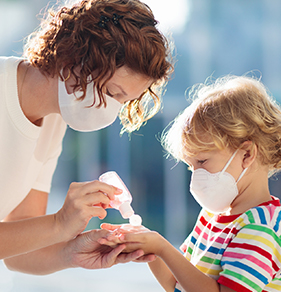December 23, 2020
The ham was perfect, the desserts delectable, the reunions warm, but you’ve just learned that Uncle Joe had COVID-19. What next? And is it safer to get tested if you’re considering meeting with family within the next several weeks? Today’s shorter quarantine guidelines, a variety of tests and newly available therapies call for updated protocols.
1. Determine your level of exposure.
Before taking steps to get tested, determine your level of exposure and whether you’ve had close contact. Seeing others outside — with everyone wearing masks — doesn’t warrant a test. If both people were unmasked and within six feet for at least 15 minutes, that qualifies as exposure and warrants a test. If you wore a mask and the other person didn’t and was at a greater distance, exposure is less likely, and you may not need to get tested. If you’re indoors and have had close contact, defined as being within six feet of someone for a total of 15 minutes over 24 hours, you’re a good candidate for getting tested.
2. How long should you quarantine if you’ve had close contact with a confirmed case?
If you’ve been exposed but don’t have symptoms, you’ll need to quarantine for 10 days, per the latest CDC guideline. People who test negative (antigen or PCR) for COVID-19 with a sample collected after day five can stop the quarantine after seven days past the exposure. However, according to the CDC and the latest medical information, a 14-day quarantine remains safest to reduce risk.
3. What if you learn that someone you saw over the holidays is having COVID-19 symptoms but doesn’t have a confirmed case?
Take a “wait-and-see” approach and stay away from others as much as possible. Monitoring your own symptoms, including temperature checks, is key. Individuals can try to limit their contact with other people, but don’t necessarily have to strictly quarantine.
4. How many days after exposure should you get tested?
Tests are most accurate about five to seven days after exposure, when your viral load is highest and can be detected more easily. So, if you had dinner on Sunday, wait until Friday to do your test. Testing negative within that five-to-seven- day period is a pretty good indicator that you don’t have COVID. Keep in mind, molecular tests, including PCR tests, are more accurate than rapid antigen tests, but can still render false negatives in roughly 1 in 15 people displaying symptoms.
5. Who should you notify of exposure and when?
If you were around someone with a confirmed case, notify anyone you have seen since exposure, but you do not need to notify local authorities unless your specific entities have this requirement. If you develop symptoms or are awaiting test results, quarantine in addition to telling others. In many areas, it can be challenging to get tested if you’re asymptomatic after confirmed exposure. This murky area is one of the things that makes this pandemic such a challenge.
6. When is getting tested a priority?
Most people can safely isolate at home. But for those at higher risk for complications from a coronavirus infection (those over 60 years of age and those with comorbidities like obesity, diabetes, kidney disease, lung disease or heart disease), it’s becoming increasingly important to get tested. New therapies, like monoclonal antibodies, are aimed at high-risk patients early on in the disease progression, so having a confirmed diagnosis is critical for those patients since can now offer things that we didn’t have before.
7. Is getting tested before a holiday gathering recommended?
Of course, getting tested and going to a gathering is not as safe as staying home and celebrating holidays with those in your household. But doing a test right before an event can help add a layer of safety on top of other protocols including wearing masks, staying at least six feet apart, keeping meetings brief, being outside, and adding ventilation. A rapid molecular-based (PCR) test is likely to yield the most accurate results, but offerings are limited, and the turnaround is longer.
This article borrowed heavily from CDC recommendations, an article in the New England Journal of Medicine, and especially from an article in the Wall Street Journal.
This document/resource was created by Aegis Therapies, Inc. for informational purposes only and does not provide medical advice. Due to the everchanging circumstances related to COVID-19, the information can change at any time and therefore, Aegis Therapies, Inc. and its affiliates and subsidiaries do not warrant or guarantee the accuracy of this information. If you have questions, you should conduct your own research.








